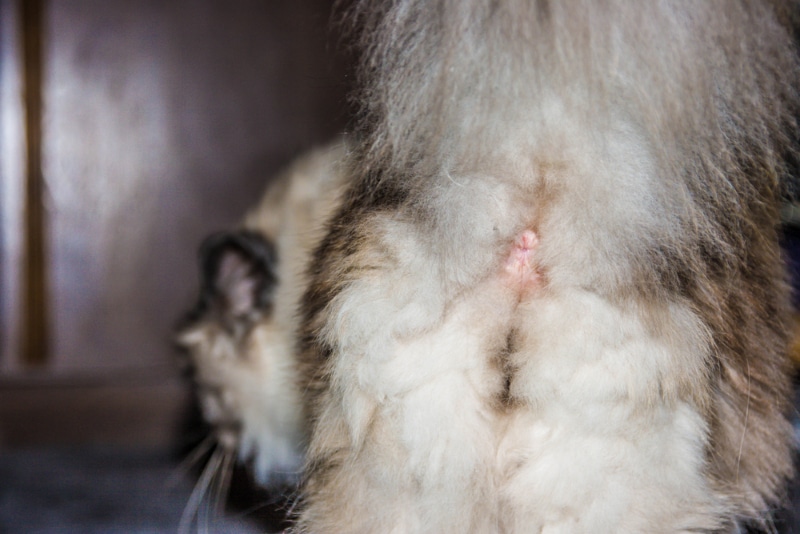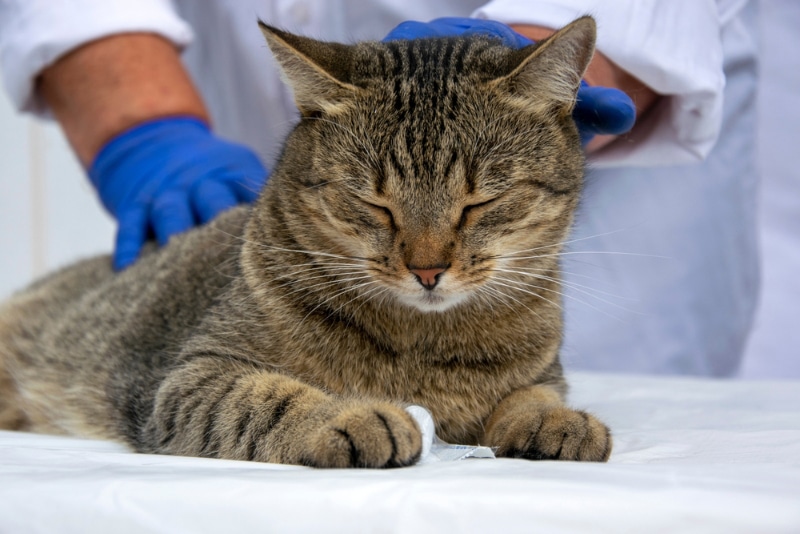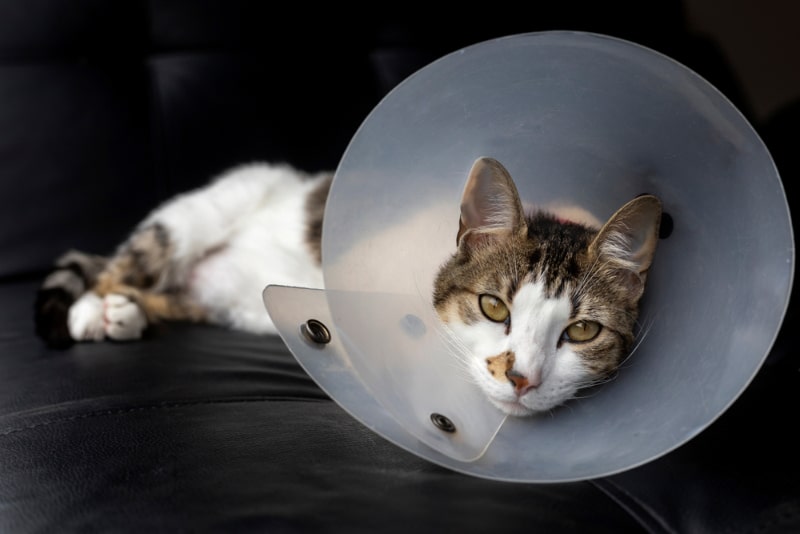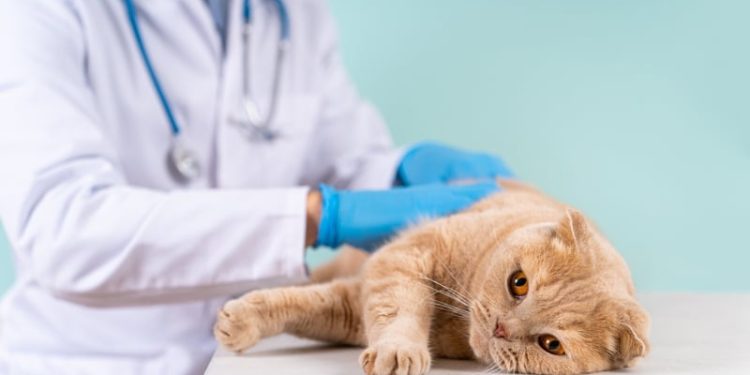A few of our readers could also be conversant in anal sacs as a standard supply of irritation in canine, however do you know that cats can endure from anal gland issues as effectively? Extreme licking, smelly discharge, a sore backside, and scooting are frequent indicators that your cat could also be experiencing anal gland points.
Within the following article, we’re going to take a better have a look at tips on how to acknowledge and deal with anal sac illness in cats, in addition to some frequent issues which may additionally give our feline mates an actual ache within the behind.
Click on Under to Leap Forward:

What Are Anal Sacs?
The phrases “anal sac” and “anal gland” are sometimes used interchangeably, however this isn’t technically correct. The anal sacs, that are small, blind-ending constructions that sit on both facet of the anus, are lined with anal glands, which produce the fluid that you just is likely to be conversant in. This fluid, much like that produced by skunks, can typically odor fishy, fetid, or foul to us, however to our pets, it’s really crammed with info.
Have you ever ever puzzled why cats and canine appear to be so all for having an excellent sniff of one another’s bottoms, in addition to what comes out of them? What they’re really sniffing is the fluid produced by the anal glands. The glands lining the anal sac are a sort of modified sebaceous (sweat) gland that produces a fluid that’s full of pheromones—the olfactory equal of a social media profile.
When your cat passes feces, these sacs are squeezed, releasing a small quantity of this fluid onto their poop. Different cats that odor this could get an thought of the reproductive standing, social standing, and well being of the feline in query, and there could also be many different messages that this fluid can relay.

What Causes Anal Sac Illness?
The primary reason for anal sac illness, also called anal sacculitis, is impaction. This will happen if the duct that drains the sac is simply too slim to permit fluid to exit, which is a extra frequent situation in canine. In cats, weight-reduction plan is the same old offender, with smooth stools resulting in incomplete emptying of the glands. Over time, the fluid accumulates, dries out, and turns into much more troublesome to specific. The result’s a big, agency gland that makes pooping tougher, in addition to making sitting fairly uncomfortable.
In case your cat has had a bout of diarrhea or tends to supply small, smooth stools, they might be vulnerable to growing impacted anal sacs, as there must be stress generated whereas defecating with a purpose to naturally empty them.
Cats which are harassed or surrounded by a variety of cats, whether or not they’re sharing their house or within the space outdoors, can typically find yourself producing an extreme quantity of anal gland fluid as their physique tries to ship a passive-aggressive message to the opposite felines within the space. This will additionally make them extra more likely to expertise an anal sac impaction.
Anal sacs may also grow to be contaminated, with abscesses forming inside the glandular tissue. This will happen on account of impaction however may also happen by itself. Though uncommon in cats, anal sac tumors may also happen.
How Is Anal Sac Illness Handled?
Within the case of anal sac impaction, your veterinarian will manually empty the sacs by squeezing them with their fingers. This could be a moderately disagreeable expertise, however one that’s normally over with shortly. In case your cat is in ache or significantly uncooperative, they might should be sedated.
If the sac is contaminated, your cat might want to take antibiotics, and the sac or abscess could should be flushed below a normal anesthetic. They can even be given anti-inflammatory ache aid as they get better.
In case your vet suspects a tumor, they might want to take a superb needle biopsy to substantiate the prognosis. Tumors might be surgically eliminated, and if performed so early, elimination is usually healing.

What Are the Indicators of Anal Sac Illness?
The primary indicators of anal sac illness are:
- Extreme licking of and across the anus.
- Very smelly backside or fluid. You would possibly discover this in an space the place your cat has been sitting and sleeping.
- Painful backside. Generally cats will soar up as if they’ve been bitten, yowl when going to the bathroom, or be grumpy or aggressive, significantly when touched close to the again finish
- That is much less frequent in cats than in canine and is the basic dragging of the underside alongside the ground in an try to get aid from the stress contained in the sacs
Impaction, An infection, or Tumor?
Solely your vet can correctly diagnose anal sac illness in your cat, however as a fundamental rule of thumb:
- Anal sac impaction is normally bilateral, with minimal exterior indicators.
- Anal sac an infection is normally unilateral, and you’ll typically see redness or swelling subsequent to the anus on one facet. The abscess could rupture, inflicting a sinus or gap within the pores and skin that blood and pus drain out of. Anal sac an infection is usually fairly painful however normally feels higher as soon as the abscess has ruptured.
- Anal sac tumors are usually much less painful, however you might be able to see some swelling beside the underside. They can even be unilateral.
As a result of cat bottoms are normally fairly fluffy, it may be troublesome to inform the distinction, so you must all the time make an appointment along with your vet in case your cat begins exhibiting indicators of backside discomfort or ache.
How Can I Stop Anal Sacculitis?
Being that the main reason for anal sacculitis is impaction or blockage, an important solution to keep away from this example is by having well-formed, agency stools. Small, smooth feces is not going to exert stress on the sacs, resulting in the buildup and drying of the fluid, which, as we all know, is how these sacs grow to be blocked.
Cats on a high-quality weight-reduction plan not often expertise points with their anal sacs, as their stools are usually of fine high quality. Cats fed lower-quality meals, or people who endure from delicate digestive techniques, usually tend to endure from anal sacculitis.
Crucial factor we will do to assist our cats keep away from this painful drawback is to:
- Discuss to your vet about what is likely to be inflicting your cat’s anal sac points.
- Feed your cat a high-quality weight-reduction plan that leads to good, agency stools.
- Take into account including fiber into the weight-reduction plan to assist enhance the standard of their stools, particularly in case your cat is liable to anal sac illness or inflammatory bowel points. Small quantities of pumpkin could be a tasty solution to obtain this, or there are a selection of various kinds of high-fiber meals or dietary supplements that may assist hold your kitty common, in addition to scale back the formation of hairballs.

Continuously Requested Questions (FAQs)
Do Cats Want Their Anal Sacs Emptied Usually?
No. Until your cat is exhibiting indicators of anal sac issues, they’re finest left alone. Cats which have a historical past of anal sac points will profit from common checkups to see in the event that they want emptying, however this must be performed by your vet.
Can Cats Have Their Anal Sacs Eliminated?
Surgical elimination of the sacs, or anal sacculectomy, is a process solely used when completely crucial (i.e., within the case of tumors), or when recurrent anal sac issues are negatively impacting their high quality of life. As a result of the anal sacs are situated very near the muscle tissues and nerves that management the anal sphincter, harm to those constructions might end in fecal incontinence. Surgical elimination of the feline anal sacs additionally poses a threat of damaging the wall of the rectum.

What Are Some Different Circumstances of the Feline Backside?
In case your cat is spending an uncommon period of time tending to their backside space, there are a couple of different situations that you ought to be conscious of.
- Rectal strictures: Fashioned by scar tissue or membrane adhesions within the rectal lining, these can create narrowed areas inside the rectum. More often than not, they’re pretty innocent, however you would possibly discover some recent blood in your cat’s poop sometimes. In additional severe instances, defecation can grow to be painful. These instances are normally managed with weight-reduction plan modification and ache aid.
- Urinary tract illness: An infection or irritation of the bladder or urethra may end up in extreme licking and grooming of the genital space, in addition to elevated visits to the litter field, straining, or toileting outdoors the field.
- Rectal prolapse: Normally brought on by extreme straining, this could end result from persistent diarrhea, constipation, intestinal worms, or neoplasia (most cancers). The motion of straining causes swelling of the rectal lining and ultimately results in essentially the most distal a part of the rectal tissue being pushed out the anus. That is an emergency and, even with immediate therapy, can grow to be a recurrent drawback.

Ultimate Ideas
Whereas cats are normally fastidious about being clear, spending an uncommon period of time targeted on the behind could possibly be an indication of anal sac illness. Your cat must be examined by a vet if they’re exhibiting any of the above indicators of backside discomfort. Usually, a squeeze of the anal sacs will remedy the difficulty, however typically, a change in weight-reduction plan is so as. There are some extra severe points that may trigger your feline to give attention to their behind, all of which need assistance out of your vet.
Luckily, extra sinister forms of anal sac illness are comparatively uncommon in cats. In case your cat suffers from anal sac points, discuss to your vet about what you are able to do to enhance the state of affairs. A high-quality weight-reduction plan with a wholesome fiber supply to advertise agency, fashioned feces is one of the simplest ways to keep away from points with these scent glands and cease your feline from affected by ache of their backside.
Featured Picture Credit score: Dina Photograph Tales, Shutterstock



